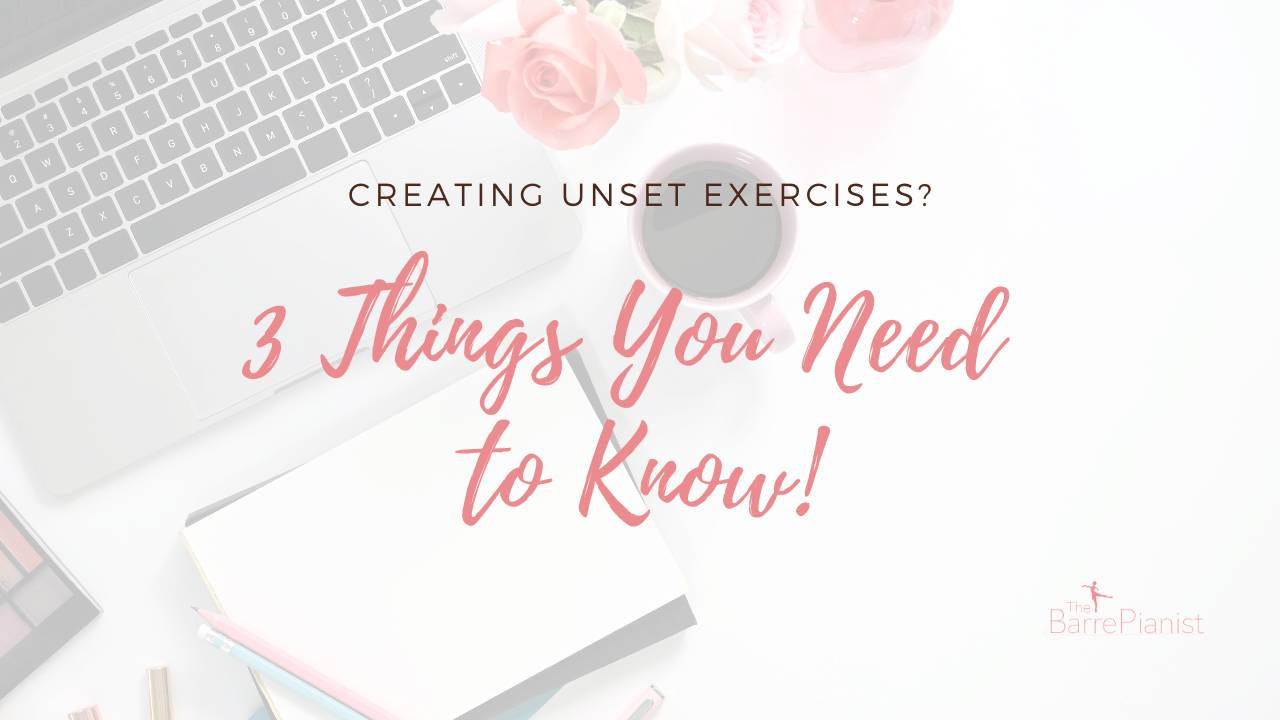
#30: What 3 things do you need to know when choosing music for an exercise?
Oct 03, 2020Boldness be my friend. - William Shakespeare
For those of you who bravely and boldly go into the realm of creating your own exercises, firstly, I raise my glass to your bravado!
You should know, based on my minimal research, that not nearly every teacher does this. In fact, I would estimate that less than 50% regularly teach unset exercises; that's so unfortunate for their students and for them! To be fair though, it is a ton of work when you're first getting started with creating exercises.
There are a lot of details to think about such as.. meter, purpose of the exercise, purpose of the class, organization/pattern of the exercise, accent of the movements, do you want an ending, what kind of music would work best, etc.
As a musician, I come from the the angle of the music. I want to give you some tips to consider as far as what to think about when you're choosing your music. Knowing that some teachers start with the music when creating an exercise, this information suddenly becomes really valuable!
Top 3 Music Details to Consider
1) Meter
Meter is important because it's going to determine right away whether you've got that magical 3rd beat or not. Let me explain.
What I mean is, with duple meter, you've got the dancer count and then a '&' and then another dancer count. 1 & 2 & 3 & 4 &, etc. Only 2 pulses including the dancer count (1 & ) between each dancer count. This forces you and your dancers to really think smart or everyone will be behind the music.
Alternatively with any triple meter, you've got 3 pulses on each dancer count, regardless of music type. 1 & a, 2 & a, or in the case of a 6 count phrase, 1 2 3, 4 5 6 (I've highlighted the 3rd pulse). Either way, you've got sets of 3 instead of 2. What this means is that you have an extra beat for movement, breath, extension, etc in every count. You and your dancers have time!
2) Accent
This topic is also super important to keep top of mind when you're picking music and here's why!
If your exercise requires your dancers to be out on the '&' and in on 1 (& close or & 1), you're going to need to find music that has that accent built into it or your dancers will NEVER be on time!
Alternatively, if you've got a great music with an anacrusis/pick-up that encourages that accent in on the 1, but you actually want your dancers OUT on the 1, you'll quickly discover that they just don't seem to pick up your exercise! In truth, they probably had a good idea, but got sucked into the innate rhythm of the music which does NOT support your exercise pattern/accent!
Know what accent you want in your exercise and choose music accordingly, OR, pay attention to the accent in the music when creating your exercise and use it; either way works.
3) Ending
Finally, the ending. As a musician I find the ending superbly helpful! I'll hear the start of the exercise which gives me the meter, accent and tempo if the teacher is good at marking musically and then I focus in on to my music options in my head or on paper. Then, I watch again near the end to see if there is a port de bras or releve type ending. This helps me when I'm flying through the music to know when to stop! I don't need to know how long your exercise is, I need to know the pattern of it! If I know it ends with 8 counts in a releve, I'm good to go!
Side note: I don't need to know how long your exercise is. This is because often I find that the teacher isn't quite sure, OR, they tell me a length of counts or bars and it's not correct and so I stop playing and the dancers are still dancing, OR, they stop dancing while I keep playing.
Truly, I find knowing the ending of the exercise, so much more helpful than the exact length. The pattern of the exercise is also helpful. For example; "32 counts I think, and then an 8 count releve after which they'll take 8 counts to go to the other side and start again." Immediately I can deduce that it's long-ish with a 16 count ending, this is easy to watch for and follow.
Conclusion
In conclusion, I salute the teachers who create unset classes on a regular basis. At some point, you chose to start teaching unset classes when it took a LOT of brain power to sift through all the options! At some point you began to sort through all the possibilities and actually began to discern what you wanted! It's not easy in the beginning.
There is a reason that ballet teacher training in most programs spans about 2 years, it's not overkill, there is a lot to know, understand and integrate into your teaching!
If you know that music is the hardest part for you as a ballet teacher, make sure you get on the waitlist for The Official Music Training Course for Ballet Teachers, it's a perfect looking glass into the standard music you use. You'll learn how it looks, how to count it and when to use it!
Stay connected with news and updates!
Join our mailing list to receive the latest news and updates from our team.
Don't worry, your information will not be shared.
We hate SPAM. We will never sell your information, for any reason.

